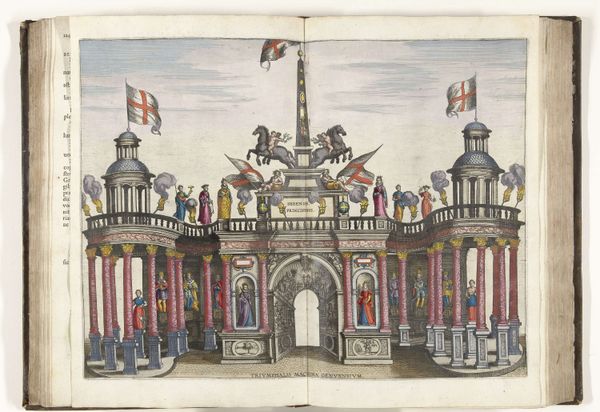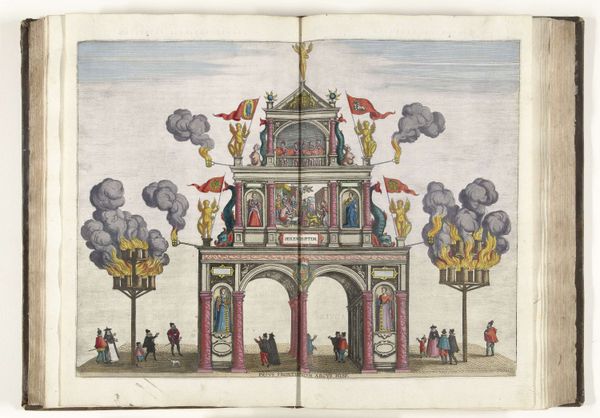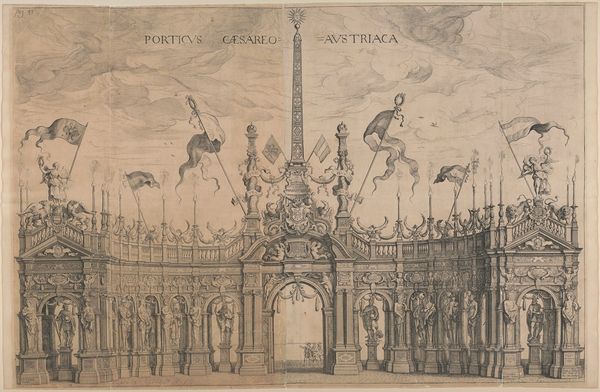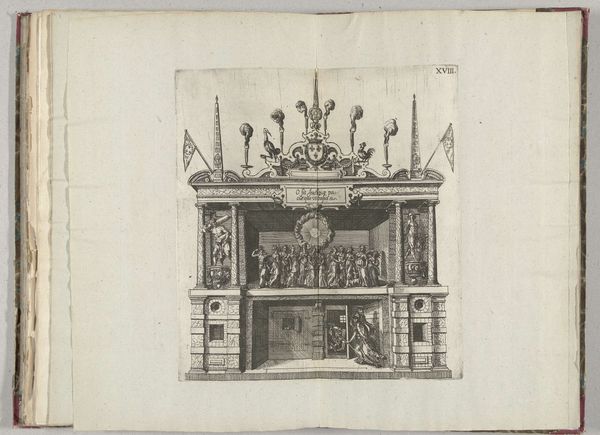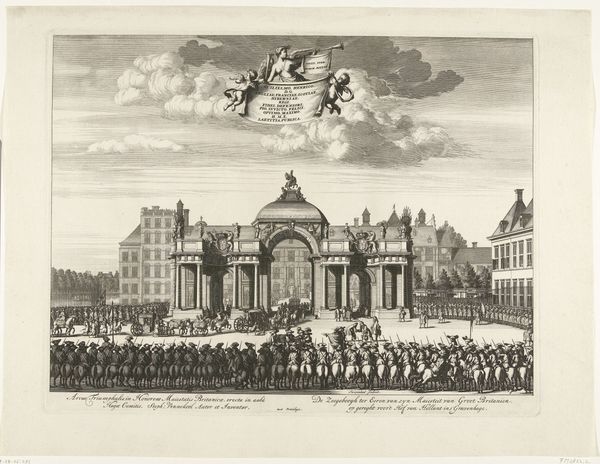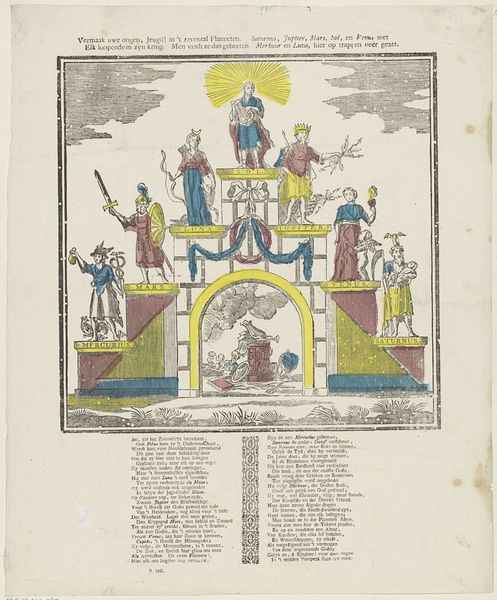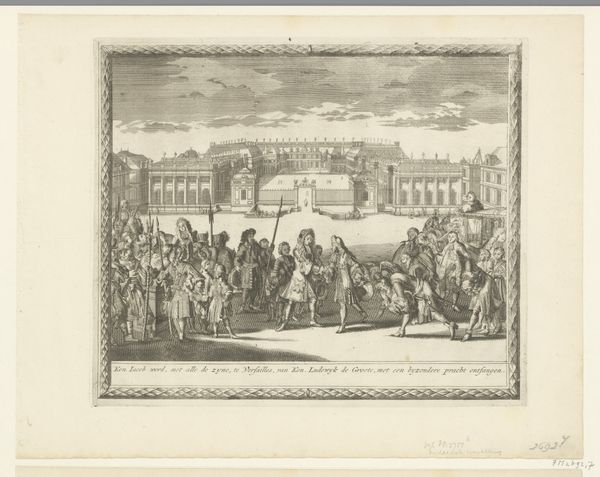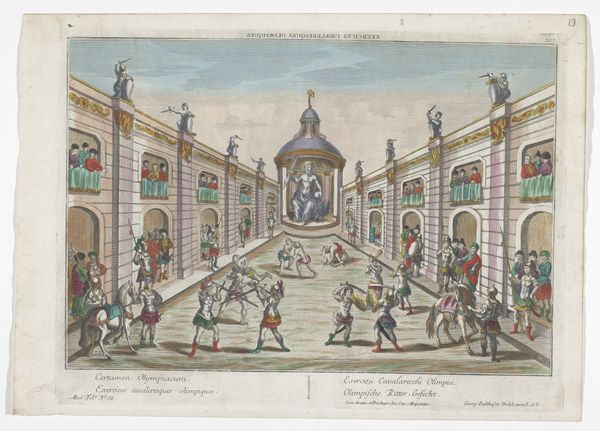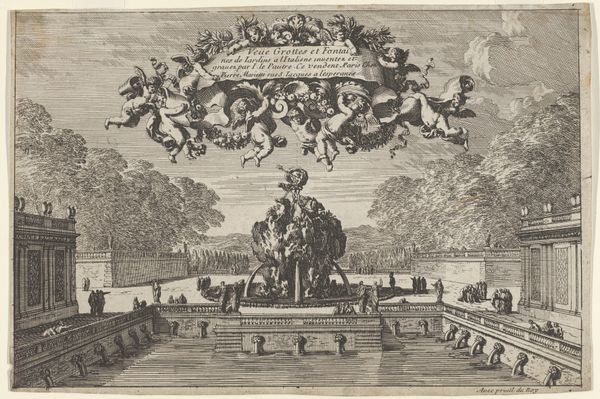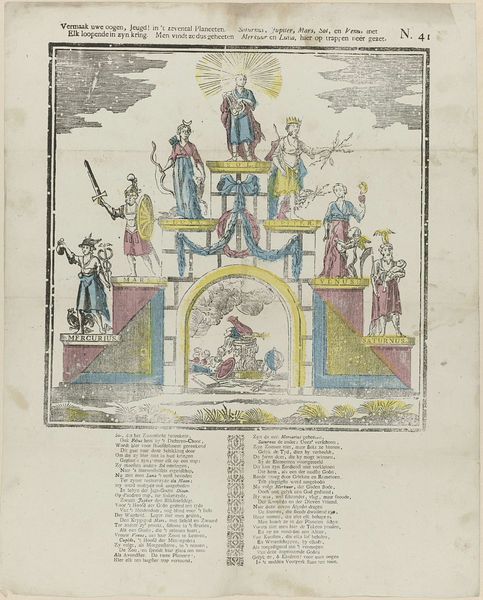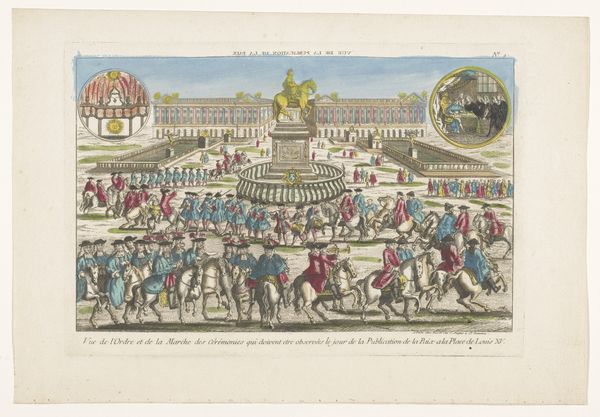
print, engraving, architecture
# print
#
mannerism
#
coloured pencil
#
history-painting
#
engraving
#
watercolor
#
architecture
Dimensions: height 328 mm, width 439 mm
Copyright: Rijks Museum: Open Domain
Curator: Here we have "Genuese triomfpoort (achterzijde)," created in 1599 by Pieter van der Borcht I, currently held in the Rijksmuseum collection. Editor: What strikes me immediately is the ornate and somewhat excessive display of architectural elements. There’s almost a sense of theater to it, isn't there? Like a stage set, fabricated and embellished. Curator: Precisely! It's quintessential Mannerism. Temporary triumphal arches were common for state visits, showcasing a city's wealth and allegiance to its ruler. These weren't necessarily built to last; often they were constructed from wood and plaster. Editor: Which explains the emphasis on surface decoration over structural integrity. The pink marble effect on the columns looks almost pasted on. It gives it an ephemeral, process-oriented feel. You can sense the making in every stroke. I wonder who actually built this arch and how they sourced the materials. Curator: Good questions. These projects engaged a wide range of artisans, blurring the lines between fine and applied arts. The imagery itself – the horses, obelisks, and figures – speaks to Genoa's aspirations for power and recognition within the broader European political landscape. Editor: It’s like visual propaganda made tangible. And look at the detail in the etching and the use of watercolor to highlight specific features. It elevates the material, making it appear much richer than perhaps it actually was. Curator: That’s a critical observation. These prints were, in essence, marketing tools. They immortalized these fleeting architectural events and amplified their political message, spreading it beyond the city. Editor: Seeing the emphasis on ephemeral material used to construct something monumental really reveals the transient nature of political power itself, doesn't it? The contrast is intriguing. Curator: Absolutely. By understanding the social and political contexts surrounding this print, we gain insights into how images were strategically deployed to shape public perception and reinforce structures of authority. Editor: And by looking at the 'how' it's made we expose the people behind that illusion of power: their labor and their contribution to history. Curator: A wonderful intersection of perspectives to understand a very clever piece. Editor: Agreed! A triumphant way to see beyond the triumph.
Comments
No comments
Be the first to comment and join the conversation on the ultimate creative platform.
